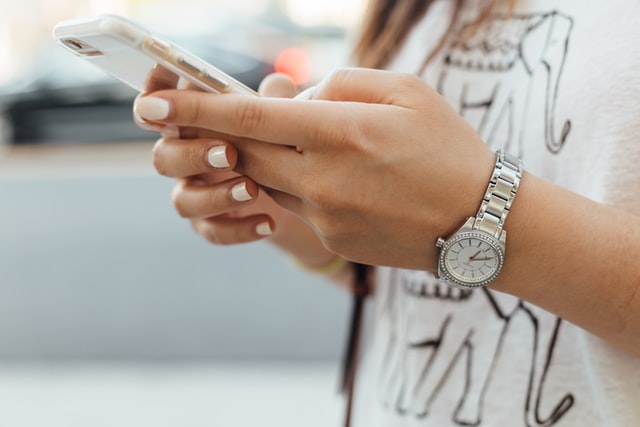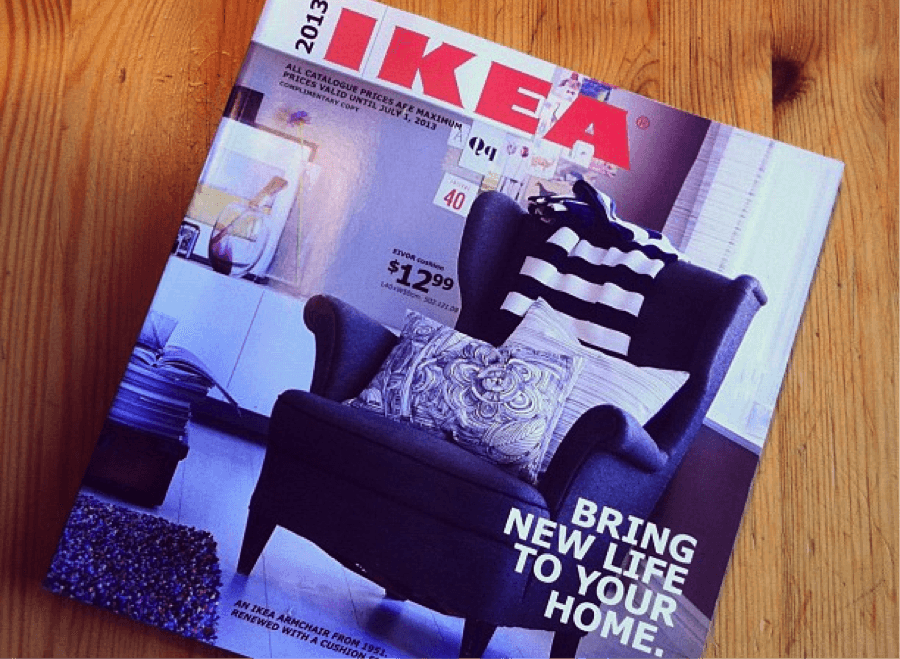
There are now more mobile devices in the world than there are people.
That stat is both startling and exciting. Mobile is opening up a whole new landscape of communication that we can use to reach customers.
Have you thought about how your company can leverage mobile marketing to increase sales?
When the sky is the limit and the opportunities seem endless, it can be difficult to develop an initial strategy. Reading blog posts and reaching out to thought-leaders is a good way to gain knowledge, but how will you use that knowledge to craft a killer mobile strategy? Learning by example can help get you started.
Here are 7 mobile marketing success stories that will inspire your own mobile marketing efforts.
1) The North Face
The North Face, one of the world’s leading providers of outdoor apparel, is using a mobile tactic called GEO-Fencing to lure more customers into their stores.
To sign up for the program, customers provide their mobile phone number and activate their mobile GPS feature. Then when they come within a certain distance of a store, they receive a text message from The North Face reminding them to stop in.
Based on the customer’s location, The North Face can tailor the text message to the weather of the region, and they can target specific customers with certain promotions.
In urban areas, The North Face GEO-Fences extend up to a half a mile around the stores, and in suburban areas they are up to a mile.
Customers have responded well to this type of mobile marketing. 79% report they have increased their visits to the store once they started receiving reminders, and 65% made a purchase as a result of the reminder.
Action Steps:
– Location is everything. Consider segmenting your mobile customers to target specific audiences with certain promotions depending on their physical region.
– Offer an option for customers to sign up to receive reminders via text message.
2) Ikea Catalog App
In 2010, Ikea launched a free application integrated with their newest product catalog. The application had two main features. One feature helped users identify their own unique style by completing a series of tests. The other created an augmented reality that allowed customers to use their mobiles phones to see how furniture would look in their homes.
Users could download a picture of the product and then use their phone’s camera feature to create a virtual 3-D image of how that piece of furniture would look in a certain area of the room.
For all the planners out there, it made purchasing furniture less of a headache. They could see how the colors matched and could even make sure the dimensions were appropriate before stepping into the store. No more eyeballing necessary.
For Ikea, the goal of the app was to inspire creativity and to stimulate customer interest in home furnishing. They also wanted to make the buying process easier and to encourage customers to engage with their catalog throughout the year, not just during the first few days they received it.
Action Steps:
– Use mobile to make the act of buying easier. Answer customers’ questions before they even ask!
– Don’t focus solely on generating sales. If you can interest and inspire customers first, the sales are likely to follow.
– Stimulate prolonged interest for your other marketing initiatives.
3) Intel
Compared to Ikea, Intel took a much simpler approach to mobile marketing. They didn’t design a flashy new interface or produce their own augmented reality. Instead, they launched a B2B mobile paid search campaign to support its “Meet the Processors” brand campaign.
Intel used both exact and broad-match keyword search terms to drive people to their website in an attempt to educate customers on the features of their new processors, and they found that Bing mobile search was 40% more efficient than a normal online search.
To supplement their PPC campaign, they also ran advertisements on a number of popular mobile websites like CNN and CBS and saw lower bounce rates compared to normal Internet advertising. This can be attributed to the fact that customers tend to search for information on their phones with greater purpose.
Action Steps:
– Conduct mobile keyword research to see how your customers are searching on their cell phones.
– Don’t focus solely on Google. Consider using Bing and Yahoo to attract mobile customers.
4) Chipotle
Some are saying this could be one of the best mobile marketing campaigns in history.
Chipotle, a fast-food Mexican grill that is attempting to revolutionise the fast-food experience, is known for its Food With Integrity initiative, a commitment to finding the very best ingredients that are raised with respect to the environment.
To promote this unique initiative, they produced and posted an animated film on YouTube and developed a new mobile game. In under two weeks, the film received over 6.5 million views on YouTube, and the game, Chipotle Scarecrow, was ranked among the top 15 free iOS applications in the iOS app store.
Experts attribute this success to the fact that the game’s production value was very high. It wasn’t just thrown together. It has well-developed characters, an emotionally driven plot, and it stays away from pushy advertisements. To users, it’s actually a game, not just a marketing ploy.
Action Steps:
– Mobile games can be great advertising tools as long as you invest in a quality game that provides entertainment.
– Show customers you are interested in providing value, not just trying to make sales.
– Integrate multiple mobile platforms to broaden the awareness of your mobile campaigns.
5) Starbucks
When the mobile revolution took stride, Starbucks used the opportunity to make paying for coffee easier and quicker for customers. In January of 2011, nearly 6,8000 company-operated Starbucks in the United States started accepting mobile payments from the Starbucks Card Mobile payment program.
Consumers can download the application to their phones and load money onto the Mobile Card. Then when they make a purchase, the barista scans the barcode on the screen and the total is deducted from the account.
Just three months from when it was first introduced, the application gained over 3 million users.
There are a number of reasons why this app was so successful. Besides making buying coffee easier than ever, having the app encourages customers to revisit the store, and it promotes customer loyalty. Customers also get to engage regularly with the Starbucks brand in a new, innovative way.
Action Steps:
– Give customers a new mobile capability that they’re excited to use.
– Use mobile to make your customers’ lives easier on-the-go.
– Develop a type of mobile program to increase customer loyalty and to encourage users to interact with your brand more often.
6) McDonald’s
McDonald’s is leveraging Instagram, one of the most popular photo and video sharing apps in the world, to interact with customers in a new way. Back in March of 2013, the company ran a promotion encouraging customers to take pictures of their favorite meals using the application.
They then created a mobile ad asking users to “Share Your Biggest Instagram Moments.” If users expanded the ad, they could share pictures of their food and even view a gallery of other photos.
McDonald’s isn’t a stranger to mobile marketing. When they were running their famous Monopoly promotion, they used mobile advertising to educate customers about the promotion. They also took to mobile to get the word out about their new product, Fish McBites.
This particular campaign was meant to broaden McDonald’s Instagram presence, and it was successful because it brought fresh attention to older products. It also bolstered a ton of user-generated content, which tends to be more influential on customers.
Action Steps:
– Use the mobile channel to create a new conversation about an old topic.
– Go where your customers are already hanging out. Start developing a presence on mobile apps like Instagram and even Vine.
7) Target
Target is using both social media and paid advertising to broaden awareness of their new mobile application, which gives mobile users access to exclusive deals and discounts.
The Cartwheel app is more than just a mobile coupon. Many of the deals can be used over and over until the expiration date. They aren’t one-and-done discounts. The deals are also personalised to help consumers save more on things they buy often, and the app rewards customers for staying active and inviting friends to join.
Customers can also share their favorite deals with their friends on Facebook, helping the Target brand reach even more newsfeeds.
While most mobile promotions are like white noise to customers, Target should be applauded for creating an effective, interactive discount application.
Action Steps:
– Give customers special perks for interacting with you on a mobile device.
– Encourage mobile users to engage with you to receive discounts. Social media contests have been proven to boost engagement.
Final Thoughts
As we move into the age of mobile marketing, it can be both exciting and overwhelming to think about all the possibilities. It doesn’t matter what industry you’re in or who your customers are—mobile marketing can work for you.
These 7 brands are each using mobile differently to connect with customers and increase sales, and I hope they will serves as examples for when you sit down to start developing your own mobile strategy.
Do you have a mobile marketing success story?
Share them with us in the comments.
Image: Flickr
Image: Catalog
Image: Starbucks






